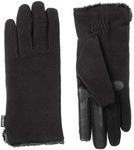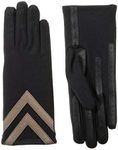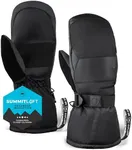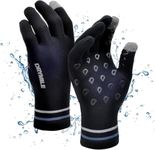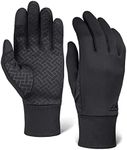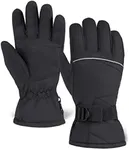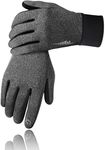Buying Guide for the Best Warm Gloves For Women
When it comes to picking the right warm gloves for women, it's important to consider several key factors to ensure you get the best fit for your needs. Whether you're looking for gloves for everyday use, outdoor activities, or extreme cold conditions, understanding the different specifications will help you make an informed decision. Here are the key specs to consider and how to navigate them.MaterialThe material of the gloves is crucial as it determines warmth, comfort, and durability. Common materials include wool, leather, fleece, and synthetic fabrics. Wool is excellent for warmth and breathability, leather offers durability and a stylish look, fleece is soft and provides good insulation, and synthetic fabrics like polyester can offer a balance of warmth and water resistance. Choose a material based on your primary use: wool or fleece for everyday warmth, leather for a combination of style and function, and synthetic for outdoor activities where water resistance is important.
InsulationInsulation is what keeps your hands warm by trapping heat. There are different types of insulation such as down, synthetic, and Thinsulate. Down insulation is very warm and lightweight but can lose its insulating properties when wet. Synthetic insulation, like Thinsulate, retains warmth even when wet and is often more affordable. For extremely cold conditions, look for gloves with high-quality insulation. For milder climates, lighter insulation may suffice.
Water ResistanceWater resistance is important if you plan to use the gloves in wet or snowy conditions. Gloves can be water-resistant or waterproof. Water-resistant gloves can handle light moisture but may not keep your hands dry in heavy rain or snow. Waterproof gloves have a membrane or coating that prevents water from penetrating. If you expect to be in wet conditions frequently, opt for waterproof gloves. For dry, cold weather, water resistance may be sufficient.
Fit and SizeThe fit and size of the gloves are essential for comfort and functionality. Gloves that are too tight can restrict movement and reduce circulation, while gloves that are too loose may not provide adequate warmth. Measure your hand size and refer to the manufacturer's sizing chart to find the right fit. Consider the type of activities you'll be doing; for example, a snug fit is better for dexterity, while a looser fit may be more comfortable for casual wear.
Touchscreen CompatibilityTouchscreen compatibility allows you to use your smartphone or other touchscreen devices without removing your gloves. This feature is particularly useful in cold weather when you don't want to expose your hands to the elements. Look for gloves with touchscreen-compatible fingertips if you frequently use your phone or other devices outdoors.
Cuff LengthCuff length affects how well the gloves protect your wrists and keep out cold air and snow. Short cuffs are easier to wear with everyday clothing and provide more freedom of movement. Long cuffs offer better protection against the elements and are ideal for outdoor activities like skiing or snowboarding. Choose the cuff length based on your intended use and the level of protection you need.
BreathabilityBreathability is the glove's ability to allow moisture from sweat to escape while keeping external moisture out. This is important to prevent your hands from getting clammy and cold. Materials like wool and certain synthetics offer good breathability. If you plan to engage in high-intensity activities, prioritize gloves with high breathability to keep your hands dry and comfortable.
